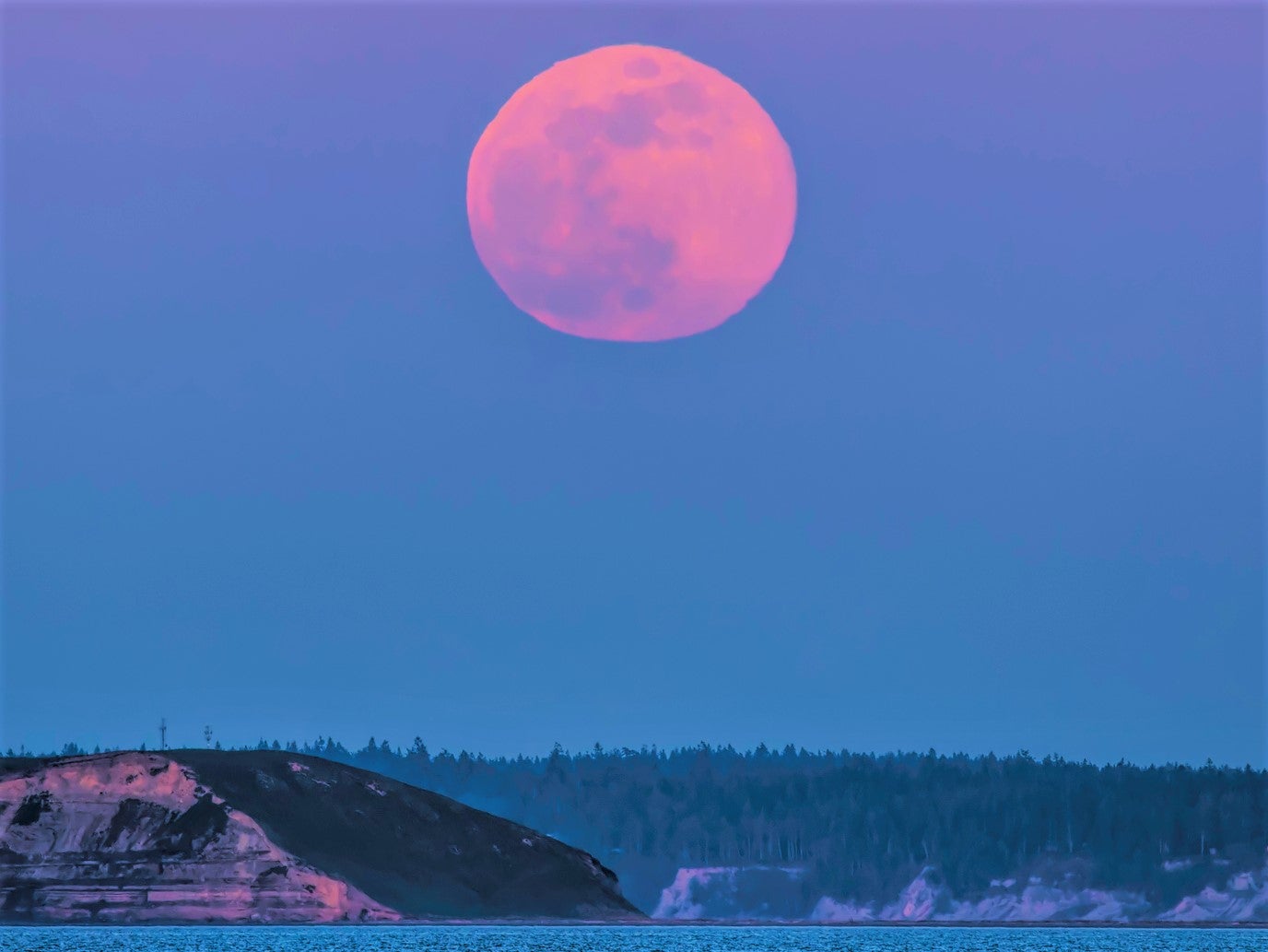Pink Moon: April full moon will be biggest and brightest of 2022 so far
Tonight’s full moon peaks at 7.55pm in the UK

Your support helps us to tell the story
From reproductive rights to climate change to Big Tech, The Independent is on the ground when the story is developing. Whether it's investigating the financials of Elon Musk's pro-Trump PAC or producing our latest documentary, 'The A Word', which shines a light on the American women fighting for reproductive rights, we know how important it is to parse out the facts from the messaging.
At such a critical moment in US history, we need reporters on the ground. Your donation allows us to keep sending journalists to speak to both sides of the story.
The Independent is trusted by Americans across the entire political spectrum. And unlike many other quality news outlets, we choose not to lock Americans out of our reporting and analysis with paywalls. We believe quality journalism should be available to everyone, paid for by those who can afford it.
Your support makes all the difference.Easter weekend will see the biggest and brightest full moon of 2022 so far.
The full moon will peak at 7.55pm BST (2.55pm EST) on Saturday, 16 April, but will appear full from Friday morning until the early hours of Monday.
April’s full moon is traditionally known as the Pink Moon, as it coincides with the flowering of a type of moss called Phlox Subulata in North America.
While the name has nothing to do with the actual colour of the Moon, under the right conditions it can appear to have a pink hue.
The phenomenon usually happens when the Moon is close to the horizon, when the Sun’s light reflected off the Moon towards Earth is filtered through clouds, dust, smoke or air pollution in the atmosphere.
The Moon can also appear bigger near the horizon due to an effect called the Moon Illusion.
Nasa explains that the trick is rooted in the way our brain processes visual information, though there is still no satisfying scientific explanation for it.
“Despite the fact that people have been observing this illusion for thousands of years, we still don’t have a rock-solid scientific explanation for it,” the US space agency wrote in a blog post last year.
“Perhaps trees, mountains, and buildings help to trick your brain into thinking the Moon is both closer and bigger than it is.”
This is not a perfect explanation, however, as Nasa astronauts in orbit have also observed the Moon Illusion despite having no foreground objects to compare it to.
Viewing conditions for the full moon should be favourable in the UK this weekend, according to the Met Office.
Saturday’s forecast is for clear skies across most parts of the country, with some mist or fog near the coasts.
The Moon will continue to appear bigger and brighter for the next few fill moons, as its orbit approaches Earth. Both June and July will see supermoons, as the satellite makes its closest pass to Earth.

Join our commenting forum
Join thought-provoking conversations, follow other Independent readers and see their replies
Comments